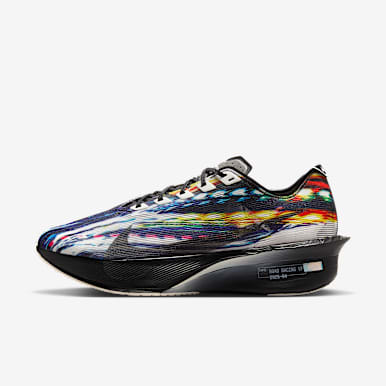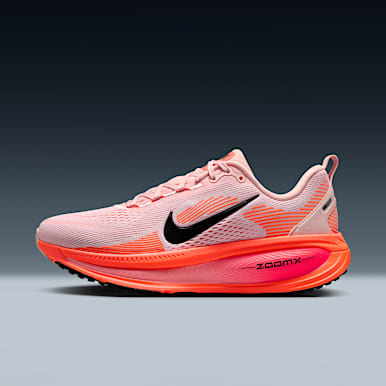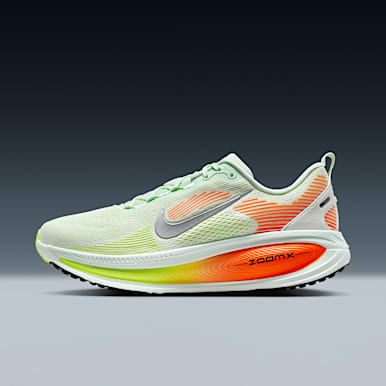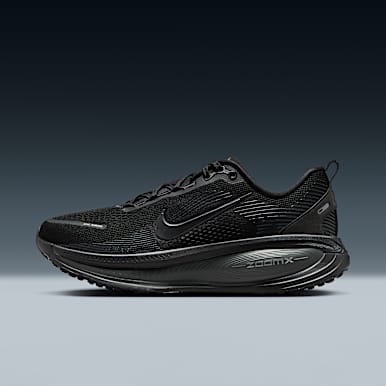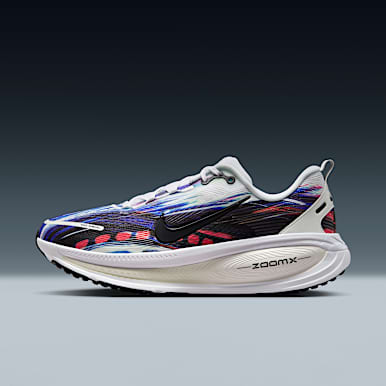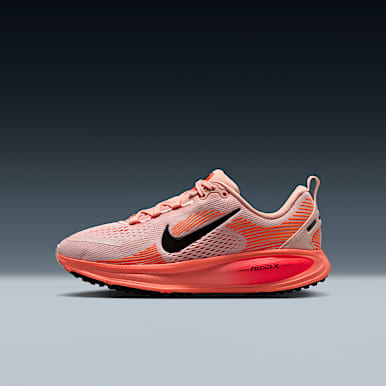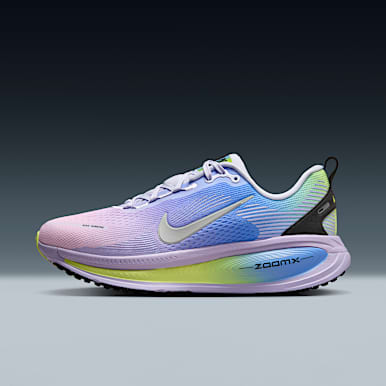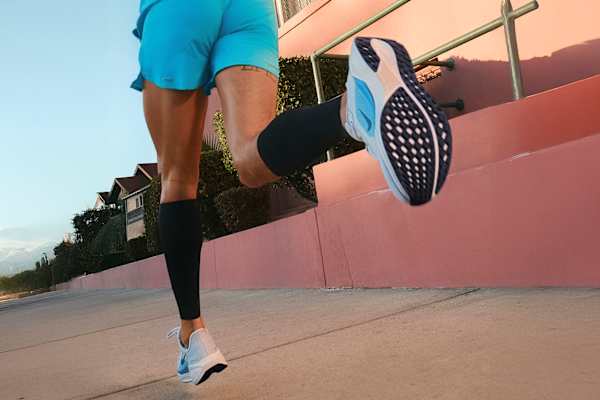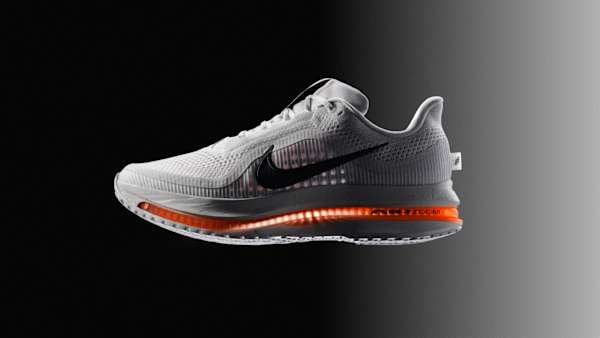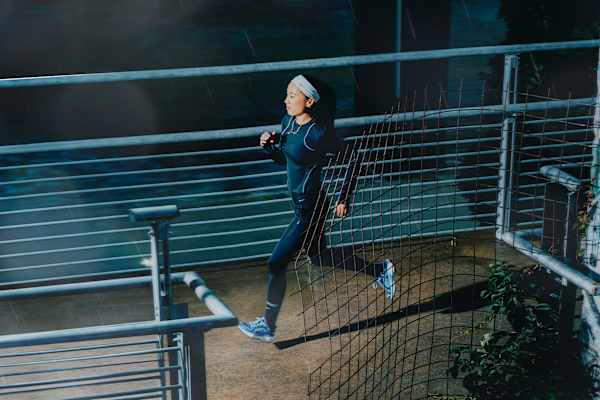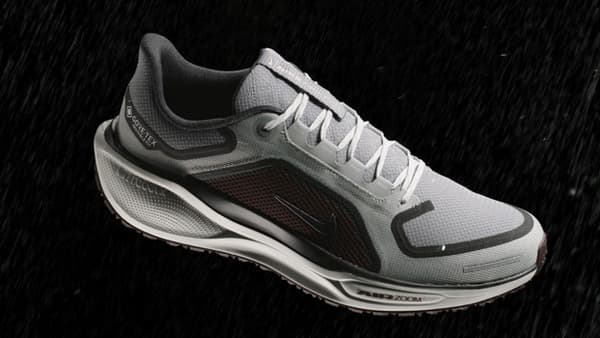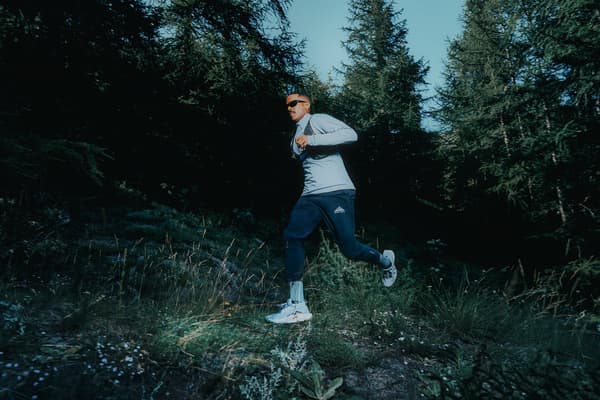How to choose running shoes
Buying guide
Hit your stride in these sneakers.
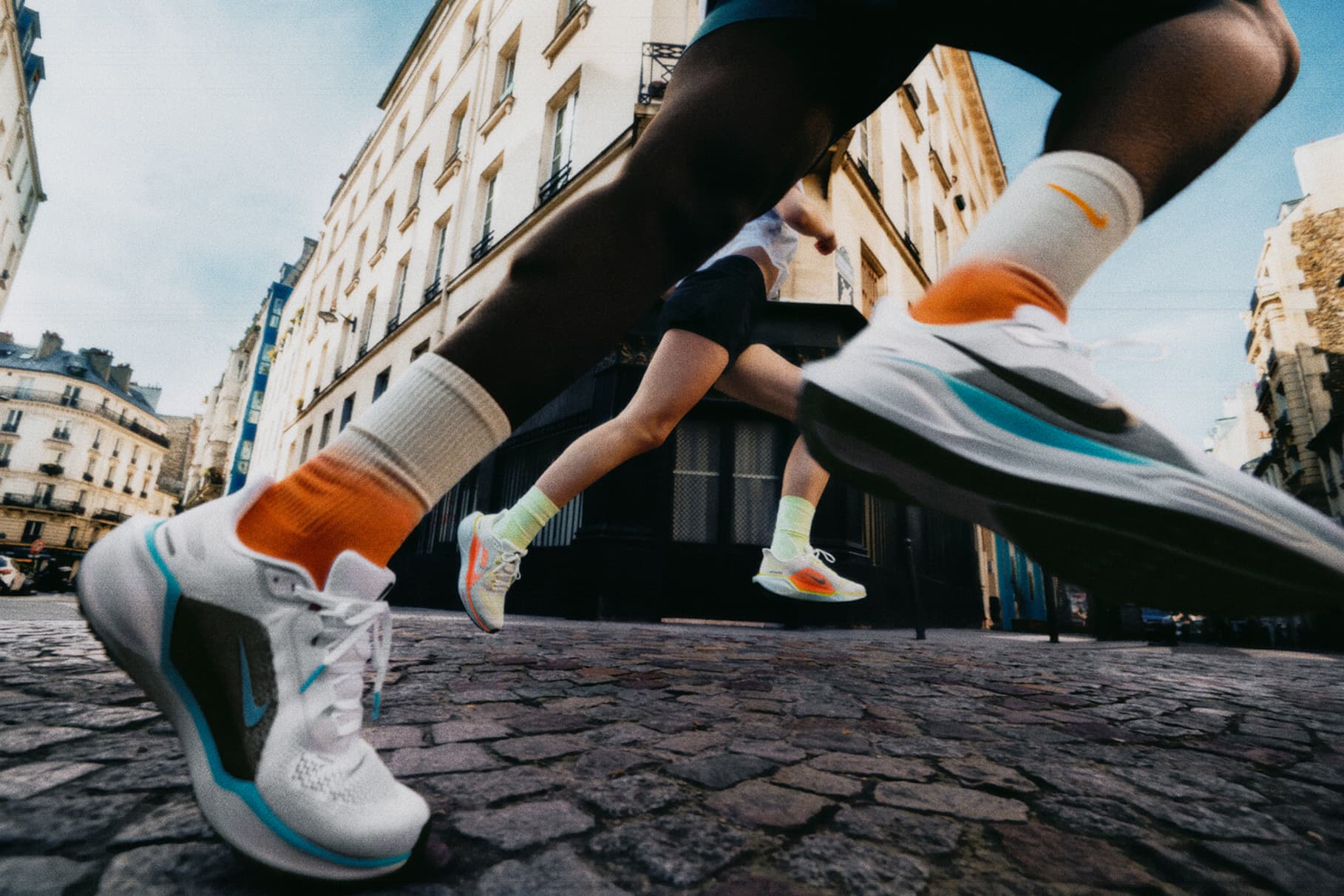
Running can feel like flying, as long as you wear the right shoes. The ideal pair can offer protection, support, shock absorption and energy return, helping to propel your performance and decrease the risk of injury. To get off to a running start with your shoe shopping, here's a run-down of the various parts of running shoes, key features to prioritise and a Nike buying guide. Hint: comfort and fit come first.
Anatomy of running shoes
When assessing each part of running shoes, focus on comfort for your toes, feet and ankles. Try to avoid slippage or too much constriction.
- Upper: the top part of the shoe should be lightweight and breathable and not chafe, bunch or pull.
- Toe box: the toe area should be roomy enough for your toes to flex and spread comfortably.
- Saddle: this portion of the upper, located under the laces, helps keep your feet in place.
- Heel drop (heel counter): the semi-rigid cup inside the rearfoot helps centre and support the heel. Look for this feature in supportive running shoes.
- Sockliner (insole): this often-removable foam insert cushions and supports the bottoms of the feet.
- Ankle collar: this part of the upper holds the heels in place and sometimes also provides ankle support.
- Outsole: the bottom layer of the sole is durable and treaded for traction.
- Midsole: the foam layer between the outsole and upper helps cushion impact, provide comfort and guide the foot through its stride.
Features to consider
Here are the top traits to bear in mind during your search.
Running surface
Match your shoe to your running surface, suggests Andrew Bumbalough, Nike product line manager, running footwear. For long-distance track, road or treadmill runs, try road running shoes, which offer durability and cushioning. For off-road runs, opt for trail-running shoes, which provide extra traction and durability. Racing shoes are more specialised: they're lighter weight to help with speed but less durable and shock-absorbing.
"Every shoe in the Nike Running line offers cushioning in both the forefoot and heel", explains Bumbalough. Along with providing comfort, heel cushioning helps minimise the impact of heel strikes. Since the front of the foot absorbs more impact than the heel during running, cushioning in the forefoot is critical. Look for responsive cushioning throughout for shock absorption and comfort, as well as energy return and bounciness.
"Nike road running shoes come in three major categories of cushioning: responsive, maximum and supportive—and you'll want to choose sneakers with the cushioning that matches your needs", Bumbalough says. The responsive style prioritises energy return, while the maximum style focuses on comfort and the supportive style stresses stability. If you overpronate or have foot issues (like osteoarthritis), consider supportive cushioning.
How your shoes should fit
"Running shoes are intended to fit true to size with approximately a thumb's width between your big toe and the end of the shoe", Bumbalough says. However, "each runner may have slightly different preferences".
What running shoes should I buy?
Consider Bumbalough's picks for road and trail running. Try these suggestions for road racing shoes.
- Road running with responsive cushioning: Nike Pegasus 41 Men's Road Running Shoes
- Road running with maximum cushioning: Nike Vomero 17 Women's Road Running Shoes
- Road running with supportive cushioning: Nike Structure 25 Men's Road Running Shoes
- Trail running for more rugged terrain: Nike Zegama 2 Women's Trail-Running Shoes
- Trail running for less rugged terrain: Nike Pegasus Trail 5 Men's Trail-Running Shoes
Frequently asked questions
Which running shoe feature is most important for injury reduction?
Based on data collected from observing runners, scientists at the Nike Sport Research Lab discovered comfort and cushioning are key. As for how much cushioning, that comes down to personal preference.
What are your tips for trying on running shoes?
- Shop in the afternoon or evening since feet tend to widen throughout the day, according to the National Institutes of Health. Shoes that fit well in the morning might feel too tight several hours later.
- Wear your running socks and bring your orthotics, making sure sneakers work well with both.
- Try on several pairs of shoes, giving each one a test run by jogging around the store.
- Finally, make sure the sneakers you pick don't fit too snugly—too-tight shoes can lead to lost or black toenails.
How often should I replace running shoes?
A general guideline is every 300 to 500 miles. To keep track of when you purchase your shoes, jot down the date in your calendar.
Words by Dina Cheney
